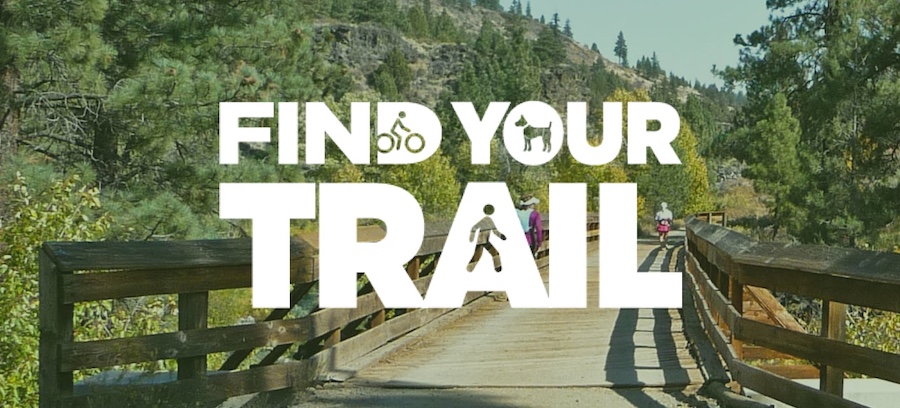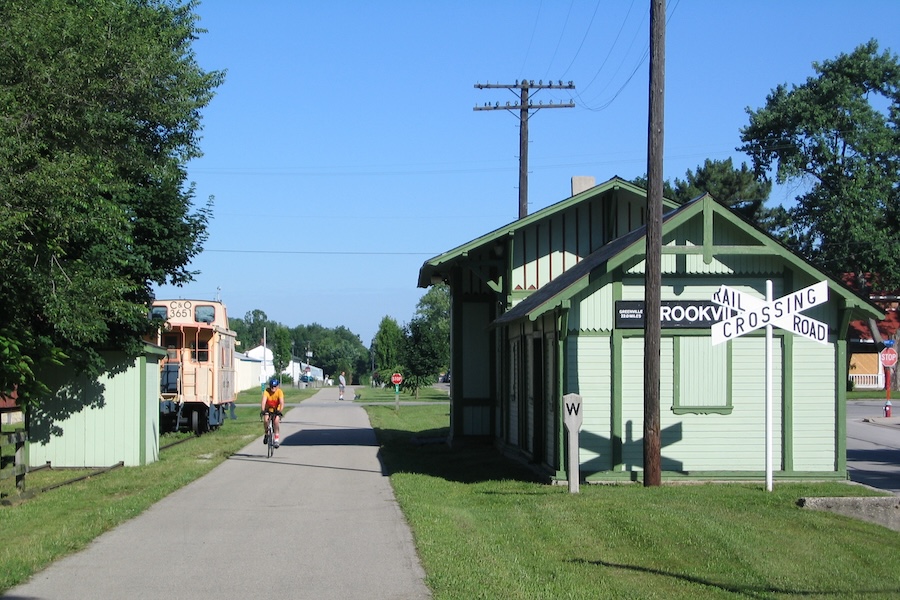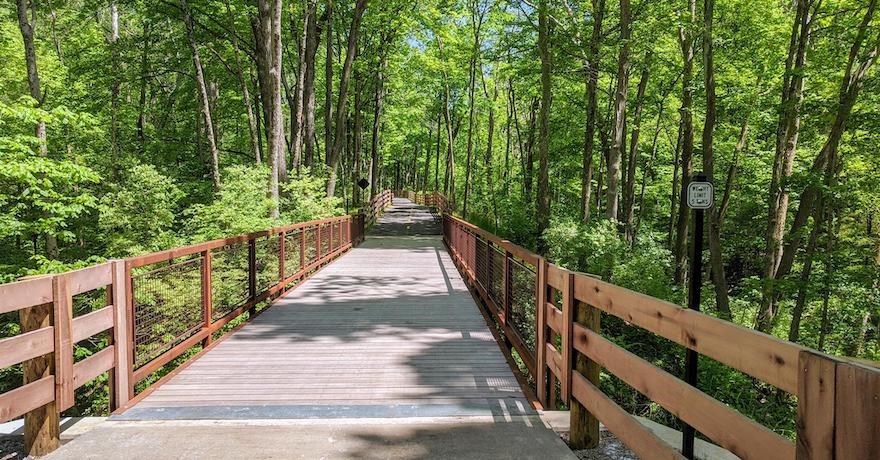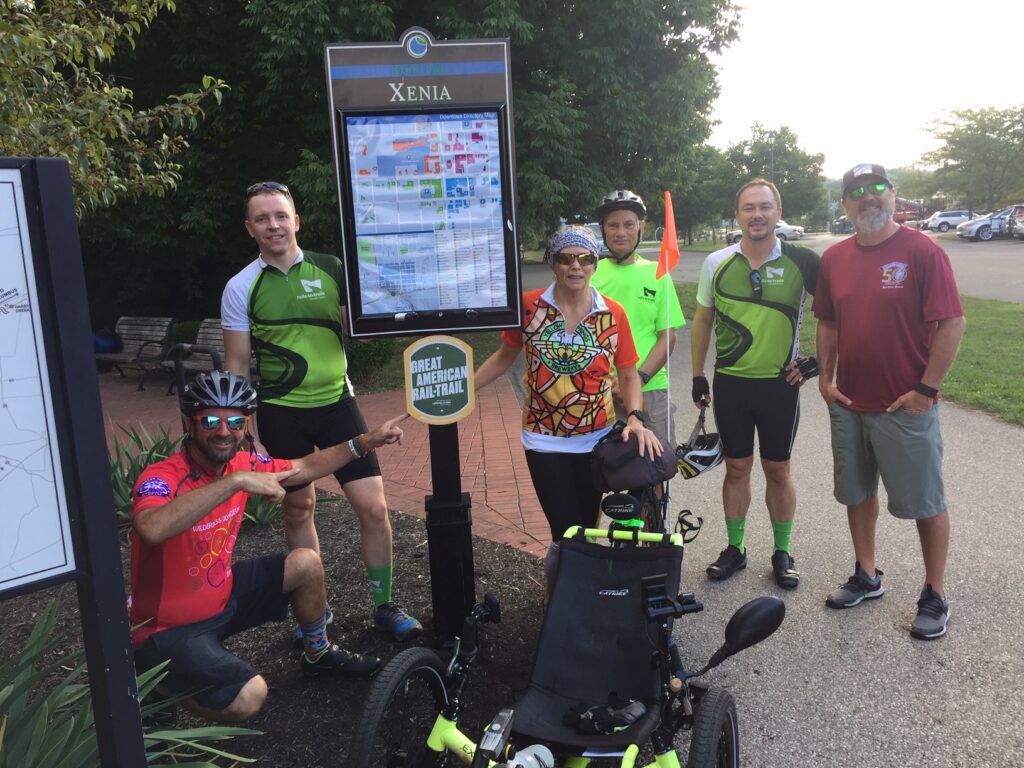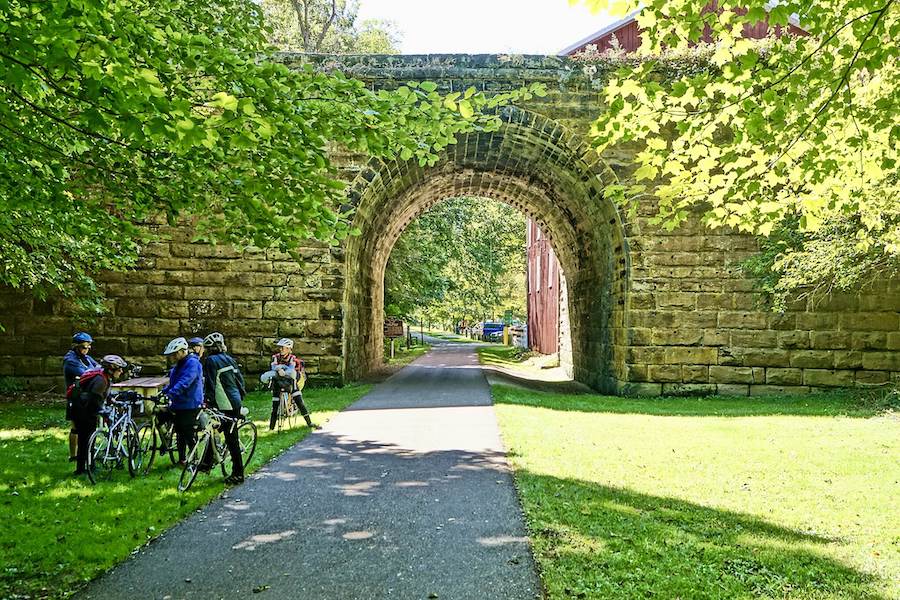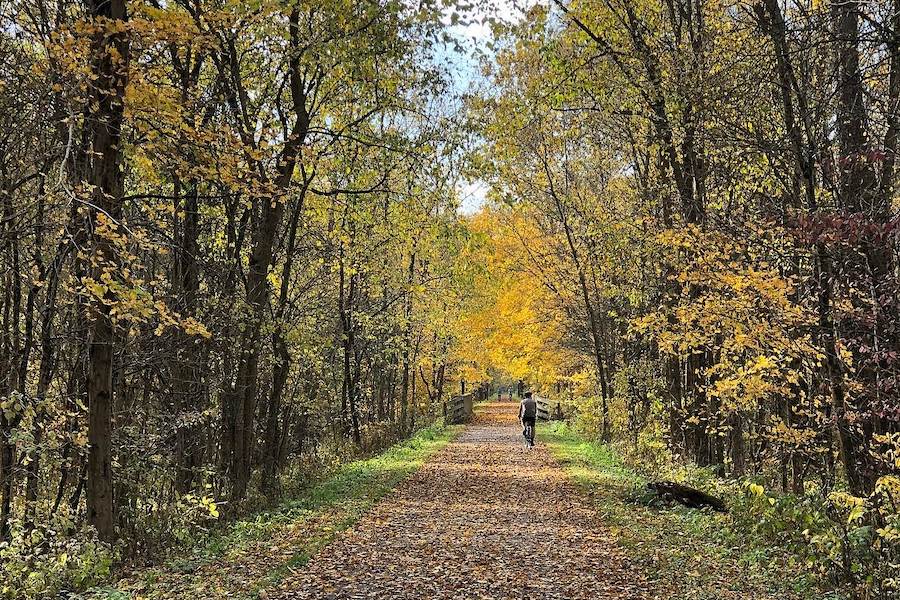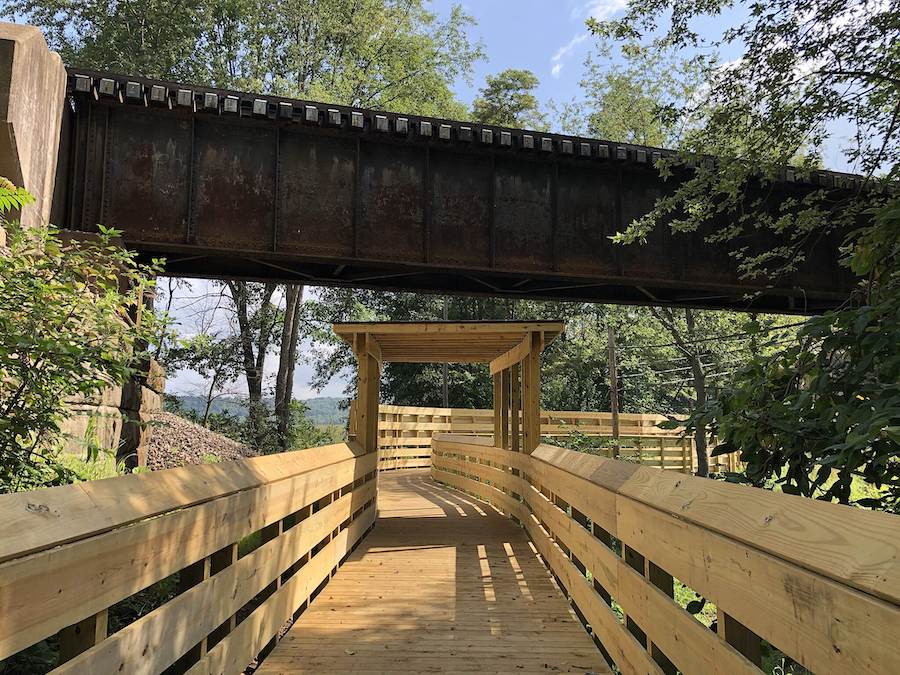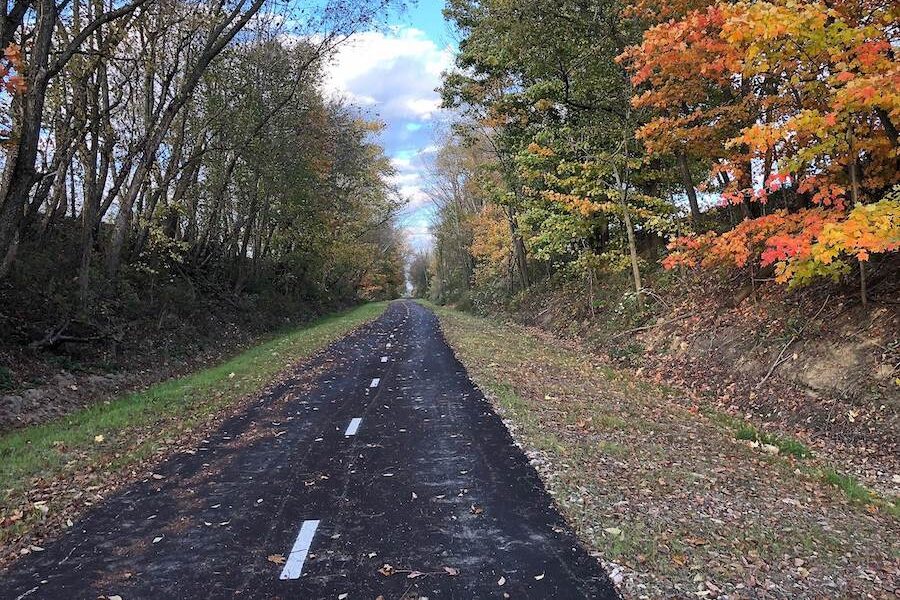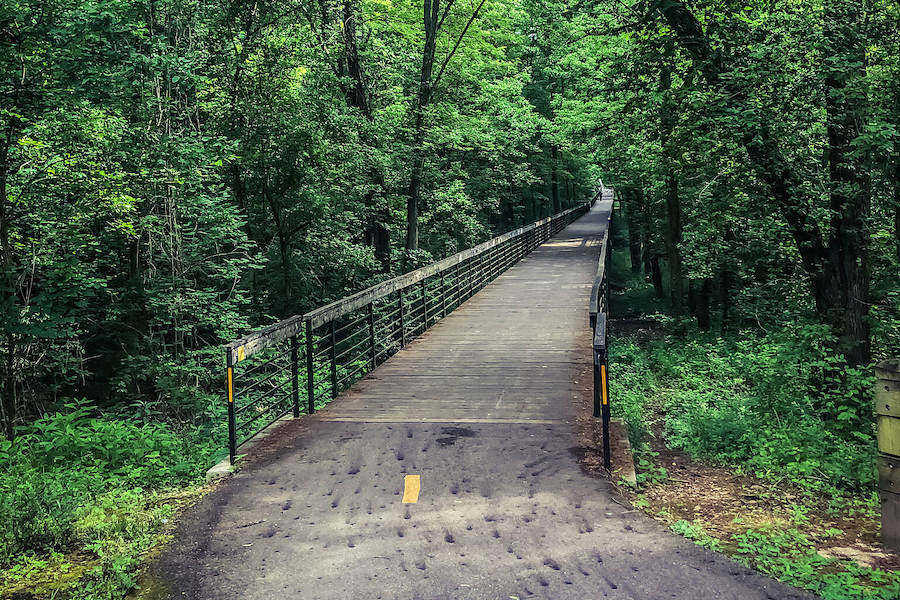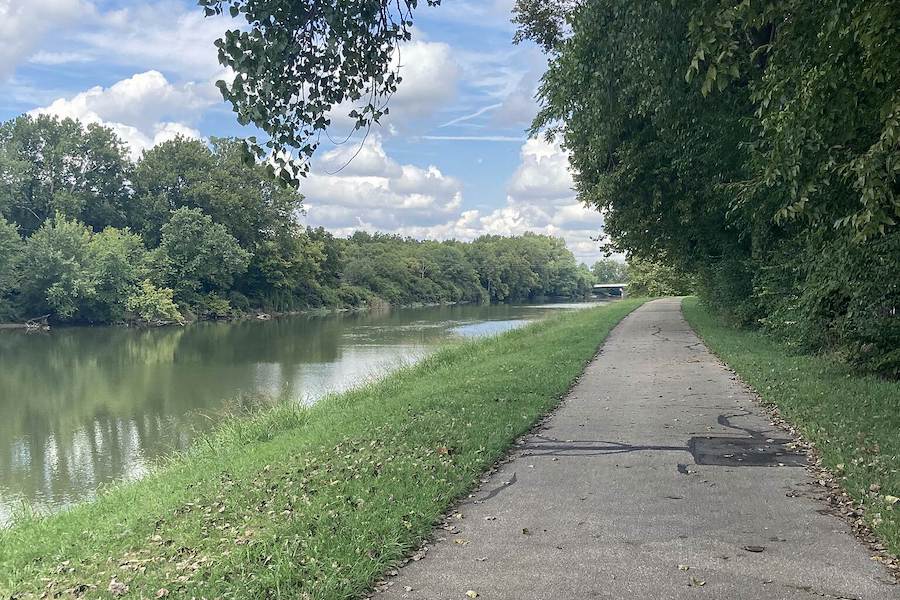Great American Rail-Trail In Ohio
Ohio’s Ohio to Erie Trail | Photo by TrailLink user epet4mail
Several iconic trails play host to the Great American Rail-Trail in Ohio—the Ohio & Erie Canal Towpath Trail and the Ohio to Erie Trail.
The Ohio & Erie Canal Towpath Trail connects two major metropolitan areas and one of the country’s most-visited national parks—and comprises a major portion of the Cleveland-to-Pittsburgh corridor of the Industrial Heartland Trails Coalition, one of RTC’s TrailNation™ projects, which will connect Pennsylvania, Ohio, West Virginia and New York via a developing 1,500-miles-plus trail network.
In Clinton, the Great American route branches off on the Ohio to Erie Trail, which—connecting to Cincinnati through Columbus—is composed of many trails that link the state’s diverse communities, including that of the largest population of Amish in the country. Along the route, commemorative sites pay homage to the state’s rich historical attributes, including the role that it played with the Underground Railroad and as an innovator in American aviation.
The “Great American” Route Through Ohio
331.9
Total Miles234.9
Existing Miles97.0
Gap Miles70.8%
Complete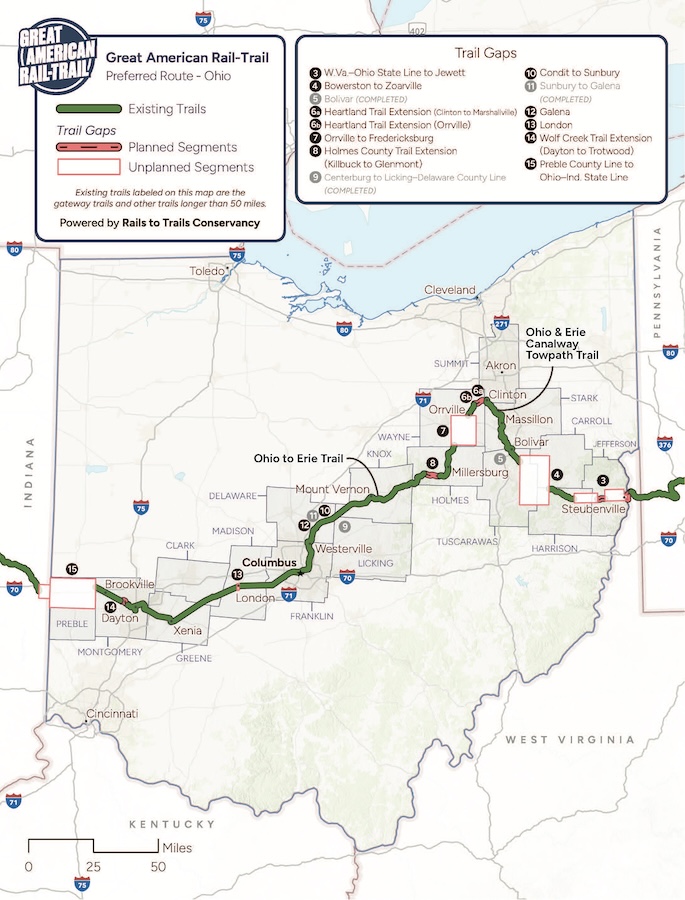
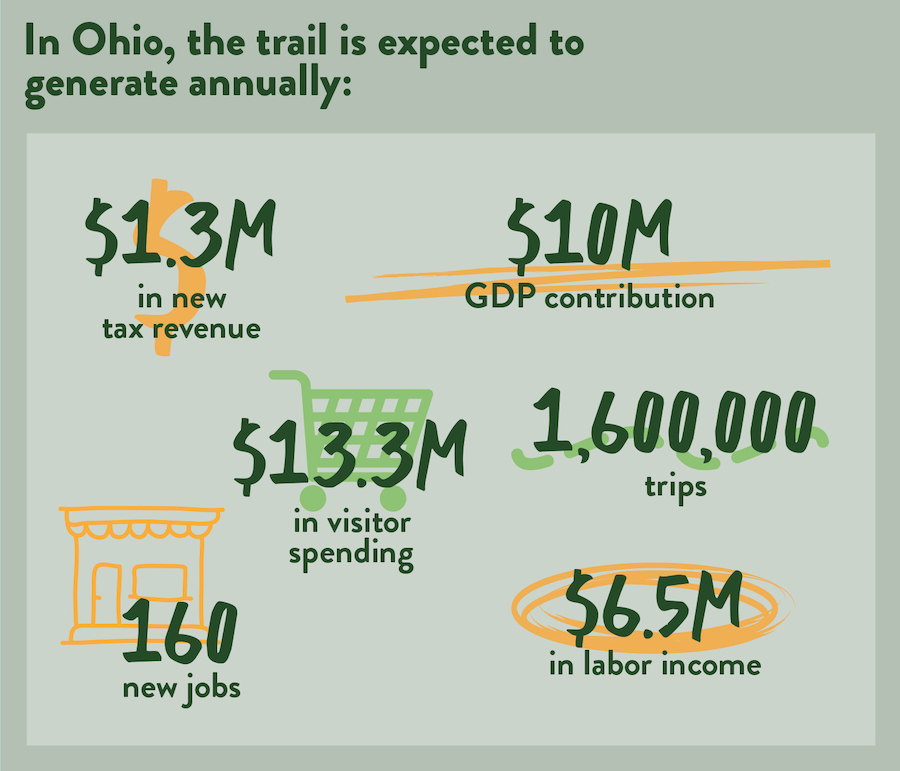
Trails Along the Route
Click the links below to view full trail descriptions on TrailLink.com.
• Conotton Creek Trail
• Zoar Valley Trai
• Ohio to Erie Trail
• Ohio & Erie Canalway Towpath Trail
• Heartland Trail
• Holmes County Trail (Part of the Ohio to Erie Trail)
• Mohican Valley Trail (Part of the Ohio to Erie Trail)
• Kokosing Gap Trail (Part of the Ohio to Erie Trail)
• Downtown Connector Trail (Part of the Ohio to Erie Trail)
• Heart of Ohio Trail (Part of the Ohio to Erie Trail)
• Meredith State Road Trail (Part of the Ohio to Erie Trail)
• Sandel Legacy Trail (Part of the Ohio to Erie Trail)
• Thomas W. Hopper Legacy Trail (Part of the Ohio to Erie Trail)• Hoover Scenic Trail (Part of the Ohio to Erie Trail)
• Genoa Trail (Part of the Ohio to Erie Trail)
• Westerville B&W (Part of the Ohio to Erie Trail)
• Alum Creek Greenway Trail (Part of the Ohio to Erie Trail)
• Downtown Connector Trail (Part of the Ohio to Erie Trail)
• Scioto Greenway Trail (Part of the Ohio to Erie Trail)
• Camp Chase Trail (Part of the Ohio to Erie Trail)
• Roberts Pass Trail (Part of the Ohio to Erie Trail)
• Prairie Grass Trail (Part of the Ohio to Erie Trail)
• Creekside Trail
• Mad River Trail
• Great Miami River Trail
• Wolf Creek Trail
Tap thumbnail to view photo gallery.
Listen To Oral History:
Gateway Trail
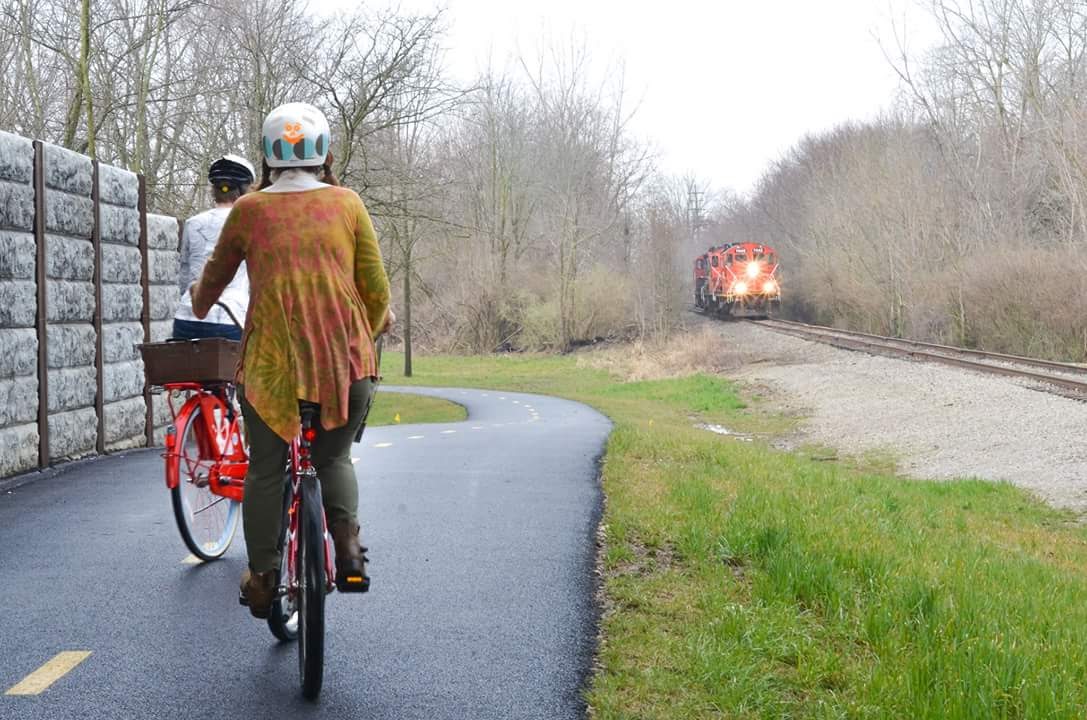
Ohio to Erie Trail
While not quite stretching sea to shining sea, the Ohio to Erie Trail will connect two major waterways: the Ohio River in Cincinnati and Lake Erie in Cleveland. Cutting a diagonal across Ohio, the developing project offers some 326 miles of trail on the ground already. The Holmes County Trail, one of many gems in the route, is a bucolic beauty known for its use by one of the largest communities of Amish in the country.
Route Reveal Celebration
Completing the Great American Rail-Trail: Catalyst Initiatives in Ohio
In every state along the preferred route of the Great American, needs for completing the trail vary. To spur trail completion, RTC has identified initial catalyst initiatives—projects or challenges that would most benefit from RTC’s national breadth of resources. (View the complete list of catalyst initiatives and criteria here.) Through these initiatives, RTC will support local and state partners, investing time, expertise and organizational resources in specific projects that are critical to the ultimate completion of the Great American Rail-Trail.
Statewide Trail Network Funding
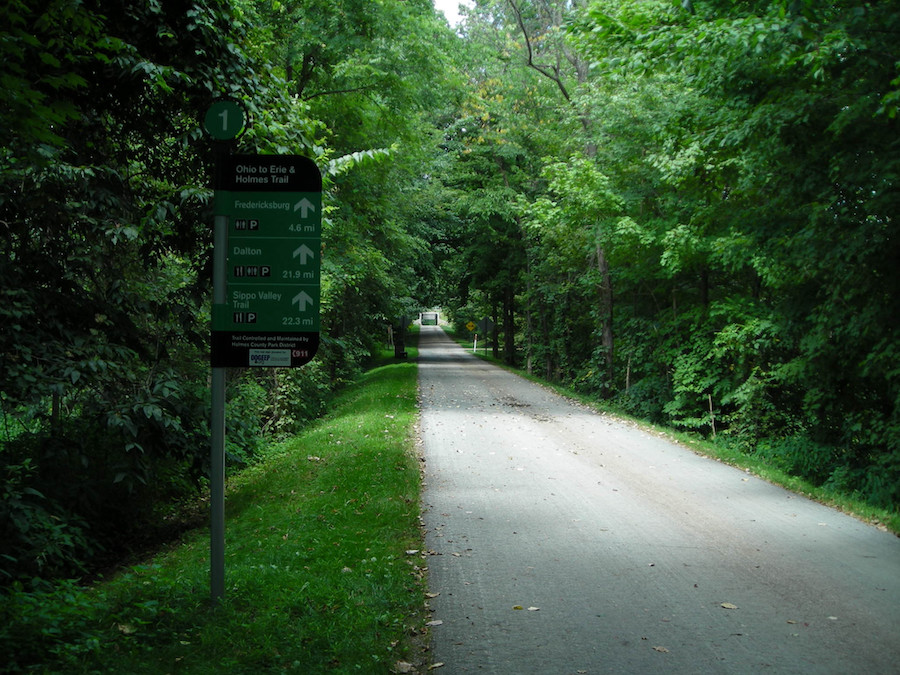
Great American Rail-Trail Gaps #14 (Wolf Creek Trail Extension—Dayton to Trotwood), #15 (Preble County Line to Ohio-Indiana State Line) and #16 (Ohio-Indiana State Line to Richmond)
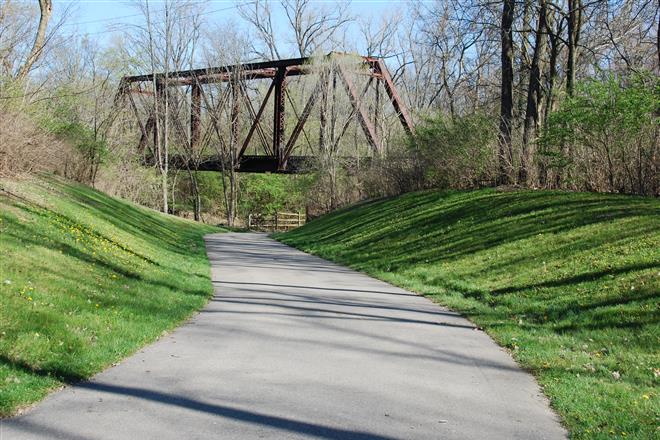
RTC will work with local partners—Preble Trails, Five Rivers Metroparks, the City of Richmond and the Preble County Park District—to provide the expertise and resources necessary to complete the combined 31.8-mile trail gap. Activities will include identifying local match funding for the Wolf Creek Trail Extension and coordinating with Preble County and the City of Richmond on activities including a corridor feasibility study, cost estimation, trail design and engineering, local stakeholder engagement, funding strategy and ultimately construction of the cross-state connector project.
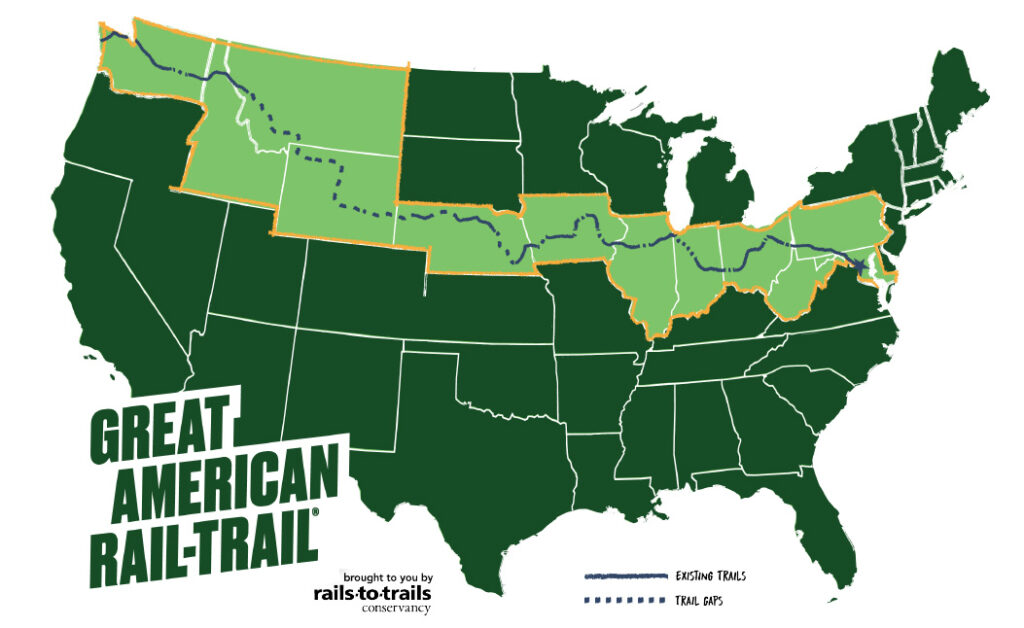
Great American Rail-Trail Preferred Route
